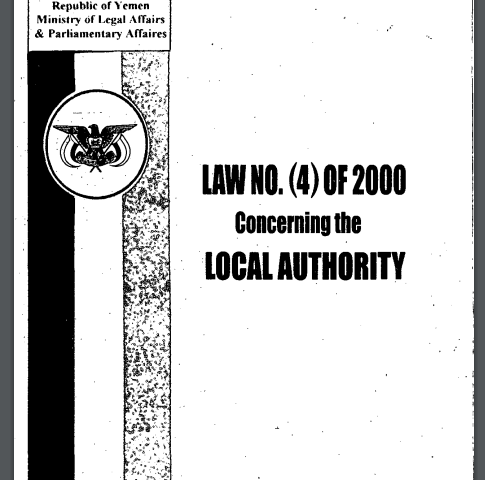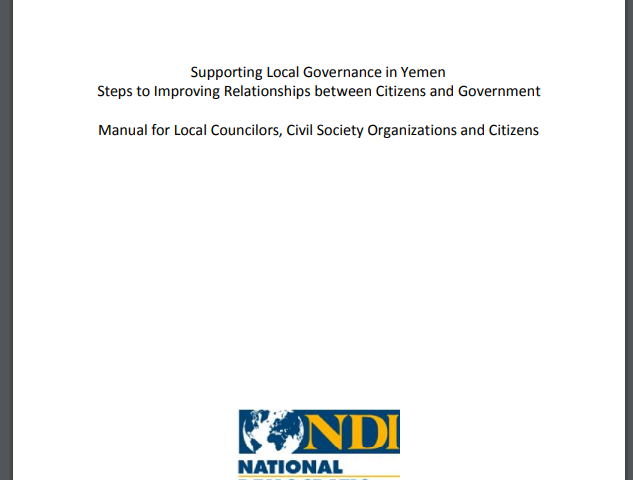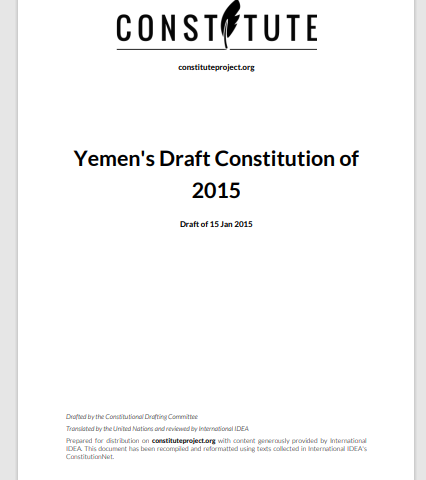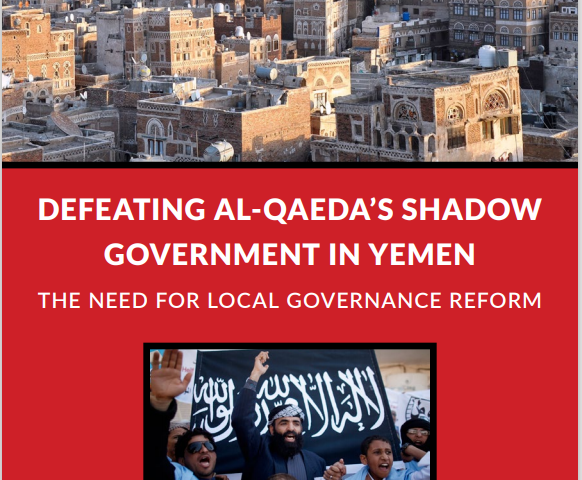The Governorate of Al-Baydha is located in central Yemen and is 267 kilometers south of Sana’a. The governorate has 20 districts. The city of Al-Baydha is the governorate capital. The governorate has special significance for its location in the center of Yemen. It has shared borders with eight other Yemeni governorates: Marib, Shabwah, Lahj, Al-Dhalea, Ibb, Dhamar, and Sana’a.
Al-Baydha governorate information
Map of Al-Baydha
Economy
Agriculture is the main economic activity in the governorate. Al-Baydha produces about 2.6% of the total agricultural output of Yemen. The most important products are vegetables and cash crops. Al-Baydha governorate produces handicrafts, such as agricultural tools, Janbiyas, textiles, wool, silver, and weapons. The governorate is home to a number of minerals in commercial quantities (Titanium, glass sand, and silica) that are not commercially mined. There are a number of historic landmarks and tourist attractions.1https://www.yemenna.com/index.php?go=guide&op=show&link=bida.
According to the 2014 Local Authority Budget, governorate revenues derived largely from grants and central subsidies (93%), with local revenues accounting for the remainder (7%).2Please see the appendix for further information on different types of revenue. The most significant local revenues derive from shared local resources and taxes, specifically revenue from zakat and taxes on qat, goods and services, income, profits, and capital gains. The governorate also derives revenue from ownership, sales of goods and services, and from penalties and fines. As elsewhere, these revenues were adversely impacted by the war and Al-Baydha is the site of an active conflict front line, causing major economic challenges for the governorate.3Republic of Yemen, Ministry of Finance, Budget Sector: estimated local authority budget for the 2014 fiscal year. As the governorate falls predominantly under the control of the de facto authorities, the establishment of a central authority for zakat in Sana’a and the decision to change zakat revenue from a local revenue to a central revenue has meant that the governorate lost one of its most important revenue streams.
According the 2014 Household Budget Survey, the poverty rate in Al-Baydha was 39.2%. With the economic downturn the governorate has faced due to the war, it is likely that the current rate is far higher.
Local governance
The local council in Al-Baydha comprises 20 members and the governor. Currently, there are two members who have passed away, two who are living outside the governorate for political reasons, and two who are suffering from poor health. As a result, the actual membership of the council stands at 14. Due to the war, the local council has not convened a meeting since 2015 and its work has been taken over by the governor. The administrative board of the local council is similarly inactive and has not been invited to meet since the outbreak of the war.
The local administration (executive) is struggling with adverse conditions as their main headquarters in the governorate (the government complex) was destroyed in fighting. The destruction of the headquarters has obstructed the work of some executive offices, which used the space, as well as the local council, which met on the premises.
Currently, the majority of the executive offices in the governorate are operating at minimum capacity due to the destruction of their offices and the absence of financial resources.4Interview with one of the leaders of the local council, Al-Baydha. March 2019. Salaries have been replaced with minimal stipends and there is very little revenue for operations or investment. The escalation of military confrontations in a number of districts has also exacerbated the situation and obstructed the work of the local authority. The population relies mainly on civil society organizations to access humanitarian assistance.5Badr Basalamah, Local Governance in Yemen; Challenges and Opportunities, Berghof Foundation Operations GmbH, Germany, May 2018, p. 9.
Access to basic services
With regard to the humanitarian situation, there are nearly 500,000 people, or approximately 58% of the population, in need of assistance in Al-Baydha. Fifty-eight percent of them are in dire need. Al Baydha has a current IDP population of approximately 73.000 (status December 2022). 6https://data.humdata.org/dataset/yemen-humanitarian-needs-overview, 2023 People in Need in Yemen
Health services in hospitals and public health facilities are available at minimum capacity and mainly supported by international organizations. However, such services are insufficient to meet the needs of the local population. Many, especially those with financial means, resort to private hospitals and health centers to access healthcare services.7Interview with one of the leaders of the local council, Sana’a capital city. March 2019.
According to OCHA, fighting in Al-Baydha damaged 64 schools.8OCHA, Overview of the Humanitarian Needs in Yemen 2018. As it falls under control of Ansar Allah, Al-Baydha is one of the governorates where teachers have not been paid their monthly salaries.9Economic and Social Developments Newsletter, Issue No.30, December 2017 published by the Studies and Economic Forecast Sector of the Ministry of Planning. This has disrupted education. There have been attempts to revive some of the schools in the governorate through fees, whereby each student would make a small monthly payment for the provision of educational services, but this has not produced tangible results.
As for drinking water, in 2016/17, the majority (59%) of households in Al-Baydha did not have ready access to potable water. With regard to sanitation, a sewage system exists only for some neighborhoods of Al-Baydha City and in Rada’a. Moreover, the system is subject to breakdown and local authorities must carry out the repairs with very limited resources.10Interview with one of the leaders of the local council, Sana’a capital city. March 2019.
Demographics
| District | Size (km2) | Population (Female) | Population (Male) | Population (Total) |
|---|---|---|---|---|
| Na’man | 272 | 6,620 | 7,580 | 14,200 |
| Nati’ | 348 | 8,904 | 10,152 | 19,056 |
| Maswarah | 751 | 4,686 | 4,895 | 9,582 |
| As Sawma’ah | 957 | 32,406 | 31,266 | 63,672 |
| Az Zahir | 233 | 14,722 | 13,665 | 28,386 |
| Dhi Na’im | 185 | 17,306 | 16,344 | 33,650 |
| At Taffah | 165 | 19,506 | 19,062 | 38,568 |
| Mukayras | 1,153 | 26,229 | 23,991 | 50,220 |
| Al Bayda City | 306 | 23,084 | 25,353 | 48,436 |
| Al Bayda | 476 | 30,251 | 27,260 | 57,511 |
| As Sawadiyah | 732 | 17,210 | 17,413 | 34,623 |
| Radman Al Awad | 233 | 11,984 | 11,950 | 23,934 |
| Rada’ | 306 | 36,189 | 40,320 | 76,509 |
| Al Quraishyah | 476 | 20,589 | 21,033 | 41,622 |
| Wald Rabi’ | 476 | 12,225 | 12,671 | 24,896 |
| Al A’rsh | 476 | 33,002 | 33,328 | 66,330 |
| Sabah | 476 | 20,281 | 19,106 | 39,387 |
| Ar Ryashyyah | 476 | 18,783 | 17,012 | 35,795 |
| Ash Sharyah | 476 | 24,230 | 25,158 | 49,388 |
| Al Malagim | 306 | 19,990 | 19,351 | 39,341 |
| TOTAL | 9,279 | 398,197 | 396,910 | 795,107 |
Figures are based on the 2021 Humanitarian Needs Overview Yemen, OCHA. Population figures include the number of IDPs and residents..






